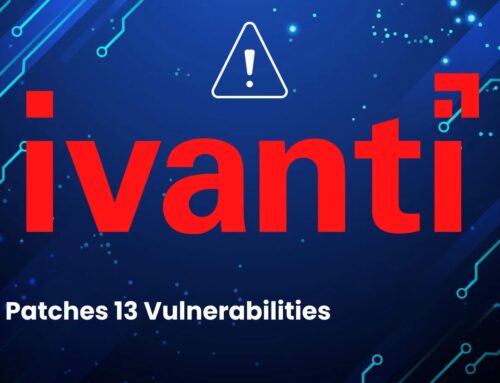
WhatsApp’s New Security Feature Allows Users to Pause, Question, and Verify Malicious Messages
Messaging platforms are a primary vecteur for sophisticated scams. Understanding how to discern legitimate communication from malicious attempts is crucial for securing digital interactions. WhatsApp, recognizing this imperative, has rolled out a significant security enhancement designed to empower users against evolving social engineering threats. This new feature establishes a “pause, question, and verify” protocol, fundamentally changing how users interact with potentially malicious messages and significantly bolstering the platform’s defense mechanisms.
The Evolving Threat Landscape in Messaging Applications
The ubiquity of messaging applications makes them attractive targets for threat actors. Scams are continuously becoming more sophisticated, moving beyond simple phishing links to elaborate narratives designed to induce urgency or trust. These often involve impersonation, urgent pleas for funds, or enticing but fake offers. The sheer volume of daily message exchanges makes it challenging for users to maintain constant vigilance, highlighting the need for built-in security features that act as a first line of defense.
WhatsApp’s “Pause, Question, and Verify” Protocol
At the core of WhatsApp’s new security offering is empowering user critical thinking. The “pause, question, and verify” protocol is not a traditional antivirus scan but rather an intelligent overlay designed to flag suspicious activity and provide contextual information. This encourages users to take a moment before acting on potentially harmful messages. While specific technical implementations are not fully detailed in the provided source, the concept implies:
- Contextual Safety Overlays: These visual cues or prompts appear when an algorithm detects an anomaly or a known scam pattern within a message. They might highlight suspicious links, unusual sender behavior, or common scam phrases.
- Automated Detection Algorithms: WhatsApp has invested in advanced algorithms capable of identifying patterns indicative of scam attempts. These algorithms analyze various factors, including sender reputation, message content, and link destinations, without compromising end-to-end encryption of user messages.
- User Education Prompts: Rather than simply blocking a message, the system is designed to educate the user in real-time, explaining why a message might be suspicious and prompting them to verify its legitimacy through independent means.
This layered approach shifts some of the security burden from solely automated systems to a collaborative effort with the user, fostering a more resilient security posture.
Disrupting Scam Centers: A Proactive Stance
Beyond empowering individual users, WhatsApp has adopted an aggressive stance against the perpetrators of these scams. The platform successfully disrupted over 6.8 million accounts linked to criminal scam centers in the first half of 2025 alone. This figure underscores the scale of the threat and WhatsApp’s commitment to proactive threat intelligence and takedown operations. By dismantling the infrastructure used by these scam centers, WhatsApp mitigates the source of malicious messages at scale, reducing the overall exposure for its user base.
Addressing Sophisticated Messaging Scams
Previous scam attempts often exploited human psychology, relying on urgency, fear, or greed. The new security features are specifically tailored to combat these more sophisticated messaging scams. This includes but is not limited to:
- CEO fraud attempts where attackers impersonate senior executives.
- Technical support scams that trick users into divulging credentials or installing malware.
- Investment and cryptocurrency scams promising unrealistic returns.
- “Grandparent” scams where attackers pose as distressed relatives needing immediate financial aid.
The “pause, question, and verify” system acts as a cognitive speed bump, prompting users to consider the authenticity of such narratives before succumbing to social engineering tactics.
Remediation Actions for Users
While WhatsApp’s new features are a significant step forward, user vigilance remains paramount. Cybersecurity is a shared responsibility. Here are crucial remediation actions every user should adopt:
- Always Independently Verify: If a message, even from a known contact, requests sensitive information or urgent action, verify it through an alternative, trusted communication channel (e.g., a phone call to a known number, not replying to the message itself).
- Be Skeptical of Urgency: Scammers often create a sense of urgency to bypass critical thinking. Any message demanding immediate action without time for verification should be viewed with extreme suspicion.
- Inspect Links Carefully: Before clicking any link, hover over it (on desktop) or long-press it (on mobile) to preview the URL. Look for misspellings, unusual domain names, or non-HTTPS prefixes.
- Report Suspicious Activity: Utilize WhatsApp’s built-in reporting features to flag suspicious messages or accounts. This helps the platform’s algorithms learn and improve detection capabilities.
- Enable Two-Factor Authentication (2FA): Secure your WhatsApp account with 2FA to prevent unauthorized access even if your password is compromised.
- Regularly Update the App: Ensure your WhatsApp application is always updated to the latest version to benefit from the newest security patches and features.
Looking Ahead: The Future of Messaging Security
WhatsApp’s new security enhancements represent a crucial evolution in messaging platform security. By combining automated detection with user empowerment and proactive disruption of malicious infrastructure, the platform is setting a higher standard for user protection. As threat actors continually adapt their techniques, the collaborative approach of technology and informed user behavior will be essential in maintaining a secure digital messaging ecosystem.
Conclusion
WhatsApp’s implementation of the “pause, question, and verify” protocol, coupled with aggressive measures against scam centers, significantly bolsters user defenses against sophisticated messaging scams. This multi-faceted approach educates and empowers users while actively dismantling the infrastructure of cybercriminals. For users, the key takeaways involve embracing skepticism, independently verifying suspicious requests, and actively utilizing the security features provided by the platform. These collective efforts are vital for maintaining the integrity and security of digital communications.





